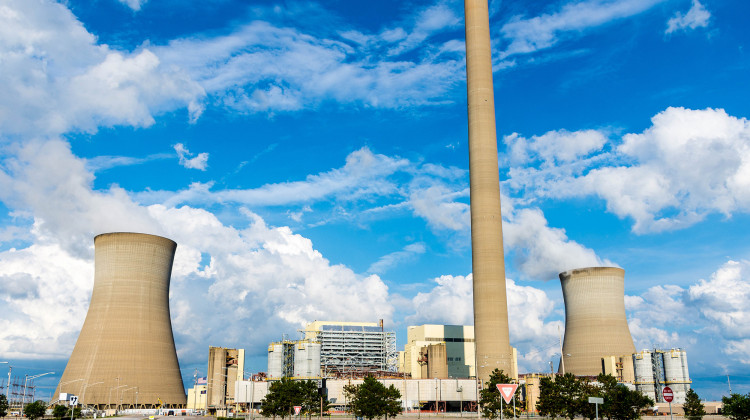
Though Indiana Michigan Power's Rockport plant is located in southern Indiana, it provides power to customers in cities like South Bend, Muncie and Fort Wayne.
Don Sniegowski/FlickrIndiana Michigan Power will close half of its Rockport coal plant — which some activists call a “super polluter.” Though the unit won’t shutter for nine years, environmentalists see the move as a victory.
The decision is part of an updated consent decree that was approved by a federal district court judge on Wednesday. More than a dozen environmental groups were involved, including the Sierra Club.
Wendy Bredhold is part of the group’s Beyond Coal campaign in Indiana. She says this will be the biggest coal unit retirement since the national campaign started in 2010.
READ MORE: I&M Hears Citizens On Proposed Rate Increase
“It’s great news for the communities here that we’re going to be breathing cleaner air,” Bredhold says.
The utility’s parent company, American Electric Power, says closing the one Rockport unit will cut down on emissions and save customers money because it would have required expensive upgrades in the future.
“Coal plants are economically challenged in the marketplace right now. It makes sense based on the age of Rockport, what kind of investment might have to be made going forward,” says Melissa McHenry, AEP's managing director of external communications.
Though the plant is located in southern Indiana, it provides power to customers in cities like South Bend, Muncie and Fort Wayne. Each of its two units can generate up to 1,300 megawatts of energy. Right now there are no plans to retire Rockport’s other unit.
More than 200 people work at the plant, but AEP isn’t sure how many jobs will be affected yet.
Among other emissions reductions in the consent decree, AEP also agreed to cut sulfur dioxide emissions at the plant by 2021, eight years earlier than it originally planned.
Indiana environmental reporting is supported by the Environmental Resilience Institute, an Indiana University Grand Challenge project developing Indiana-specific projections and informed responses to problems of environmental change.
 DONATE
DONATE







 Support WFYI. We can't do it without you.
Support WFYI. We can't do it without you.